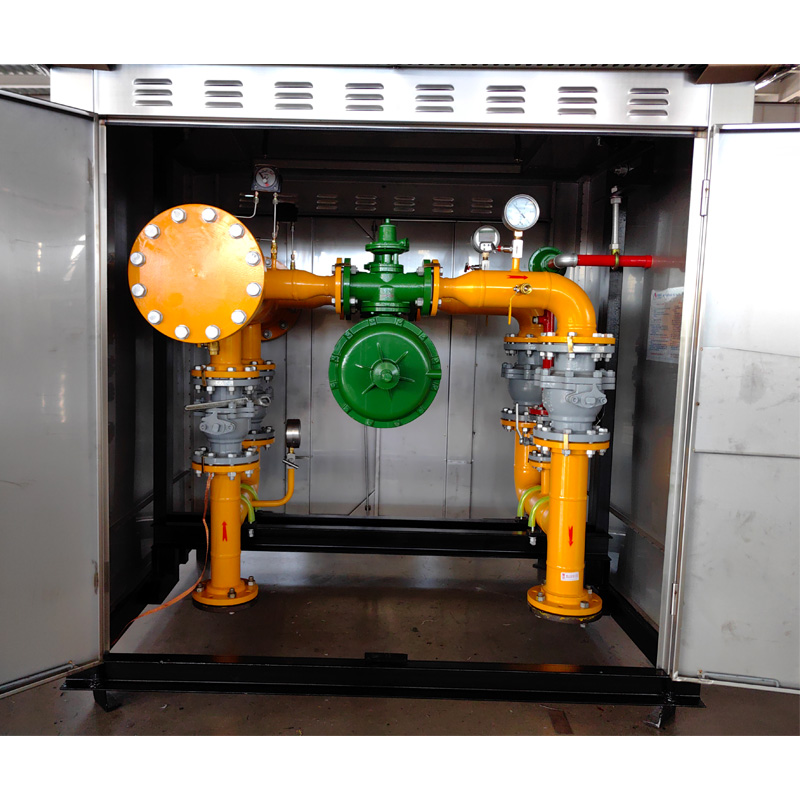
Nov . 06, 2024 10:37
Back to list
Natural Gas Pressure Regulator System Design and Optimization Techniques
Understanding Natural Gas Pressure Regulators
Natural gas is an essential energy source that powers millions of homes, industries, and vehicles around the world. To ensure the efficient and safe delivery of natural gas, one critical component is the natural gas pressure regulator. This article aims to explore the functions, types, and significance of these devices in natural gas systems.
What is a Natural Gas Pressure Regulator?
A natural gas pressure regulator is a device used to control the pressure of natural gas supplied to residential, commercial, and industrial facilities. The main purpose of a pressure regulator is to reduce the high-pressure gas coming from a source—like a pipeline—to a lower, usable pressure suitable for consumption by appliances or equipment.
How Does It Work?
The functioning of a pressure regulator is based on the principles of physics and engineering. When natural gas flows through the regulator, it typically enters at a high pressure. The regulator is designed with a diaphragm that reacts to changes in downstream pressure. When the downstream pressure rises above a preset level, the diaphragm moves and adjusts a valve within the regulator, thereby restricting the flow of gas and reducing pressure. Conversely, if the pressure falls below the desired level, the diaphragm allows more gas to flow through. This continuous adjustment maintains steady and safe gas delivery.
Types of Pressure Regulators
There are various types of natural gas pressure regulators, each serving specific applications
.
2. Diaphragm Regulators Commonly used in residential applications, diaphragm regulators are highly sensitive and provide precise control over gas pressure. They are typically employed in situations where a wide range of pressure stabilization is necessary.
منظم ضغط الغاز الطبيعي

3. Line Pressure Regulators These regulate the pressure of gas in a pipeline before it reaches any consumers. They ensure that the gas is delivered at a consistent pressure from the main line to various downstream systems.
4. Two-Stage Regulators These combine both a high-pressure and a low-pressure regulator in one unit, providing more accurate pressure control and enhanced safety. They are ideal for larger facilities that require stable gas pressure.
Importance of Natural Gas Pressure Regulators
Pressure regulators play a critical role in various aspects of gas distribution
- Safety By controlling gas pressure, pressure regulators help prevent gas leaks and explosions. High-pressure gas can be dangerous if not properly managed. - Efficiency Maintaining the correct pressure ensures that appliances operate efficiently. Many gas appliances are designed to function at specific pressures, and using a regulator helps achieve that.
- Longevity of Equipment By preventing overpressure situations, regulators help extend the lifespan of gas equipment and appliances, reducing maintenance costs and downtime.
- Environmental Impact Efficient gas delivery systems contribute to lower greenhouse gas emissions. By ensuring the correct amount of fuel is provided to appliances, pressure regulators can help minimize wasted energy.
Conclusion
Natural gas pressure regulators are indispensable in the safe and efficient distribution of natural gas. By ensuring the gas is delivered at the correct pressure, these regulators protect infrastructure, enhance energy efficiency, and promote safe usage. As the world continues to seek reliable energy sources, the importance of pressure regulators and their role in natural gas systems cannot be overstated. The future of natural gas will undoubtedly rely on technological advancements that will further enhance the capabilities and safety of pressure regulation, ultimately supporting a cleaner and more sustainable energy landscape.
Latest news
-
Safety Valve Spring-Loaded Design Overpressure ProtectionNewsJul.25,2025
-
Precision Voltage Regulator AC5 Accuracy Grade PerformanceNewsJul.25,2025
-
Natural Gas Pressure Regulating Skid Industrial Pipeline ApplicationsNewsJul.25,2025
-
Natural Gas Filter Stainless Steel Mesh Element DesignNewsJul.25,2025
-
Gas Pressure Regulator Valve Direct-Acting Spring-Loaded DesignNewsJul.25,2025
-
Decompression Equipment Multi-Stage Heat Exchange System DesignNewsJul.25,2025

